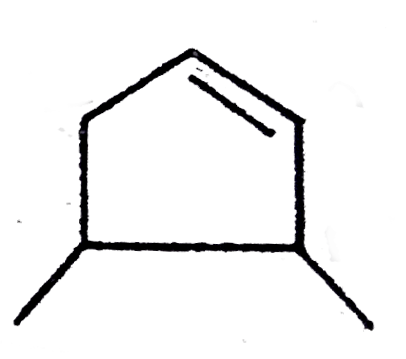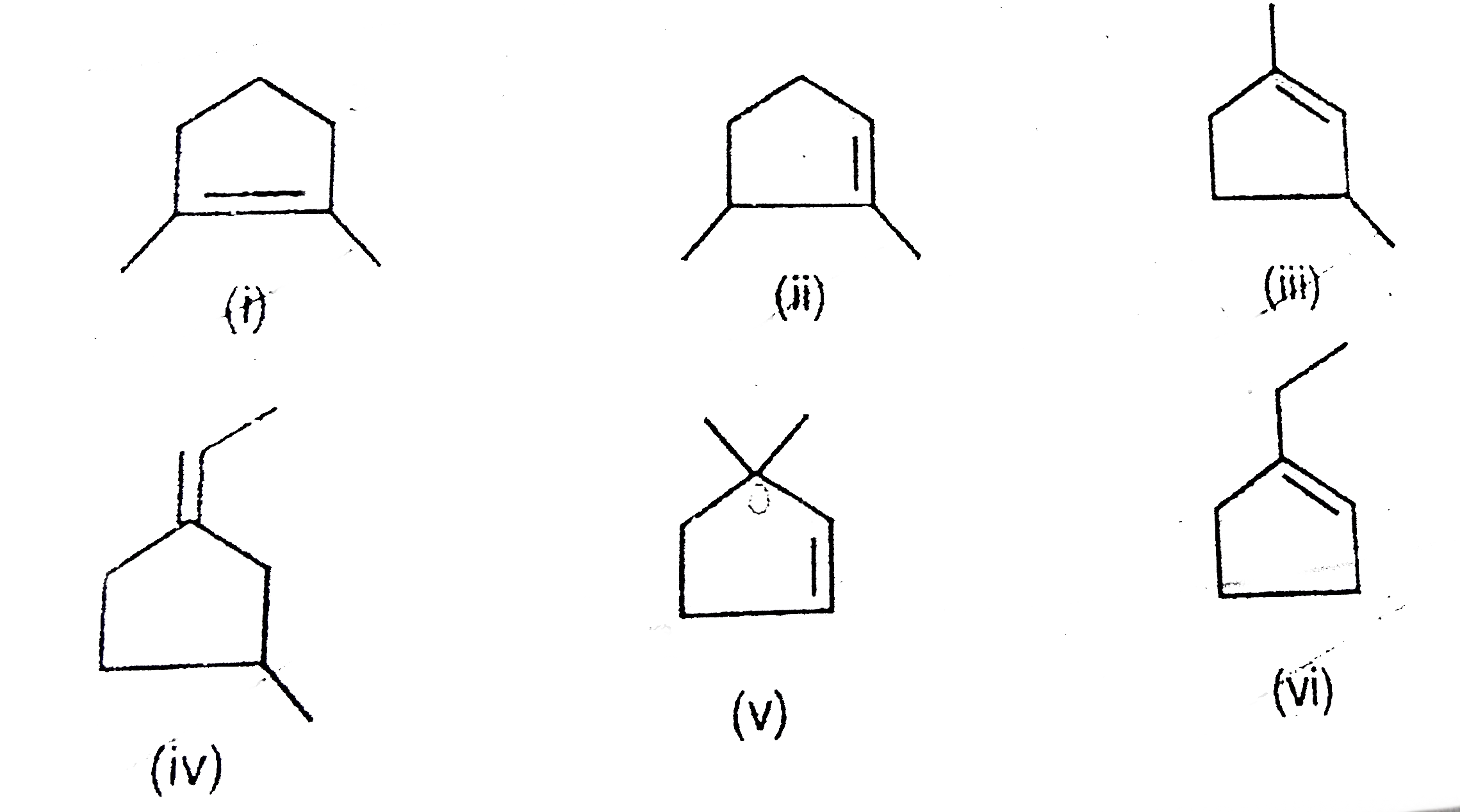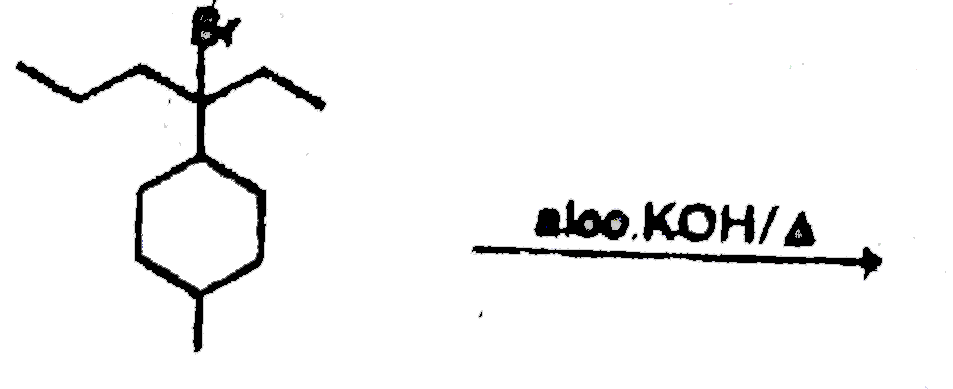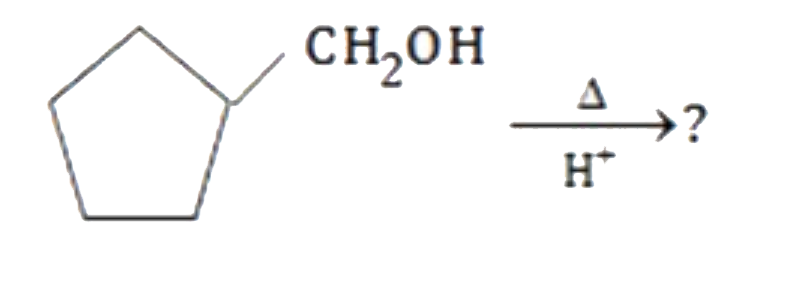On catalytic reduction (H2/Pt) how many alkenes will give 2-methylbutane?
To determine how many alkenes can yield 2-methylbutane upon catalytic reduction with hydrogen in the presence of platinum (Pt), we can follow these steps:
Step 1: Understand the Structure of 2-Methylbutane
First, we need to draw the structure of 2-methylbutane. The molecular formula for 2-methylbutane is C5H12, and its structure can be represented as follows:
CH3∣CH3−CH−CH2−CH3
Step 2: Identify Possible Alkenes
Next, we need to identify the alkenes that can be reduced to form 2-methylbutane. Alkenes have a double bond that can be converted to a single bond during catalytic reduction.
1. Alkene 1: 2-Methyl-2-butene
- Structure:
CH3∣CH3−C=CH−CH3
- Upon reduction, the double bond between the second and third carbon will convert to a single bond, yielding 2-methylbutane.
2. Alkene 2: 2-Methyl-1-butene
- Structure:
CH3∣CH2=C−CH2−CH3
- The double bond between the first and second carbon will also reduce to form 2-methylbutane.
3. Alkene 3: 3-Methyl-1-butene
- Structure:
CH3∣CH2−CH=C−CH3
- The double bond between the second and third carbon will reduce to yield 2-methylbutane.
Step 3: Count the Alkenes
From our analysis, we have identified three different alkenes that can be reduced to form 2-methylbutane:
1. 2-Methyl-2-butene
2. 2-Methyl-1-butene
3. 3-Methyl-1-butene
Thus, the total number of alkenes that can give 2-methylbutane upon catalytic reduction is 3.
Final Answer
The answer is 3 alkenes.
---
First, we need to draw the structure of 2-methylbutane. The molecular formula for 2-methylbutane is C5H12, and its structure can be represented as follows:
Next, we need to identify the alkenes that can be reduced to form 2-methylbutane. Alkenes have a double bond that can be converted to a single bond during catalytic reduction.
- Structure:
CH3∣CH3−C=CH−CH3
- Upon reduction, the double bond between the second and third carbon will convert to a single bond, yielding 2-methylbutane.
- Structure:
CH3∣CH2=C−CH2−CH3
- The double bond between the first and second carbon will also reduce to form 2-methylbutane.
- Structure:
CH3∣CH2−CH=C−CH3
- The double bond between the second and third carbon will reduce to yield 2-methylbutane.
From our analysis, we have identified three different alkenes that can be reduced to form 2-methylbutane:
2. 2-Methyl-1-butene
3. 3-Methyl-1-butene
The answer is 3 alkenes.
Topper's Solved these Questions
- HYDROCARBONSBOOK - VMC MODULES ENGLISHCHAPTER - HYDROCARBONSEXERCISE - JEE Main Archive
46 Videos
- HYDROCARBONSBOOK - VMC MODULES ENGLISHCHAPTER - HYDROCARBONSEXERCISE - JEE Advanced Archive
121 Videos
- HYDROCARBONSBOOK - VMC MODULES ENGLISHCHAPTER - HYDROCARBONSEXERCISE - Level-2
50 Videos
- HALOALKANES AND HALOARENESBOOK - VMC MODULES ENGLISHCHAPTER - HALOALKANES AND HALOARENESEXERCISE - IN-CHAPTER EXERCISE - F
6 Videos
- ICONIC EQUILIBRIUMBOOK - VMC MODULES ENGLISHCHAPTER - ICONIC EQUILIBRIUMEXERCISE - IMPECCABLE
50 Videos
Similar Questions
Knowledge Check
On catalytic reduction (H2/Pt) how many alkenes will give n-butane ?
A1B2C3D4On catalytic reduction with H2/Pt how many alkenes will give n-butane?
A1B2C3D4
How many alkene/s from following are more stable than


View SolutionCompound (X) on complete catalytic hydrogenation with H2/Pt gives an alkane. The number of moles of H2 required per mole of compound (X) is:
View SolutionWrite structures of all the alkenes which on hydrogenation give 2-methylbutane.
View SolutionHow many alkenes are possible in the given below reaction ?

View SolutionAssertion : Butane and 2-methylbutane are homologues.
Reason : Butane is a straight chain alkene while 2-methylbutane is a branched chain alkene.
View SolutionDraw the structure of 2-methylbutanal.
View Solution

